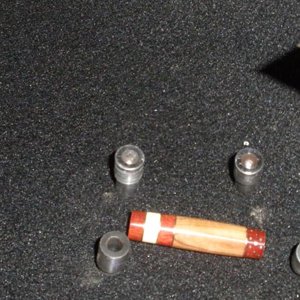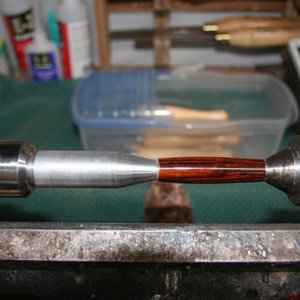Rob, Thanks for posting the pict of the "TBC" centers from PSI (I think).
This brings up a whole new different way of helping people. For 15 years, TBC was considered between centers with the two pointed end centers - as on the edge of my pict above in post #24. (OR See the original TBC at the end of this post.) These was the original TBC method. PSI and maybe another company only recently introduced a different set of TBC options, such as what you have.
Your TBC requires bushings all the way from beginning to end, which is totally the opposite purpose of the original TBC - to be able to apply finish on the lathe without using bushings.
Bushings work fine for many people and those with tremendous experience know how to overcome bushing problems with ease. But that takes experience and problem solving. But for the inexperienced (and even some with experience), bushings can cause problems at different stages - if it is out of round, or as most commercial bushings do - are just a little bit loose - can cause problems with perfect roundness. Bushings also stick to the blank when finishing and break off the finish from the blank in some instances, which requires a RE-finishing.
This Thread will modify the experienced TBC users to change their responses in the future.
Now, we should ask
- What kind of TBC are you using? (which will confuse the new guy or lady). TBC isn't just TBC when trouble shooting anymore.
Then we should ask,
Does your TBC require bushings from beginning to end? (The original and long past TBC did not require bushings),
OR,
show us a pict of the user's TBC setup.
The original purpose of TBC was on IAP back in 2008 was to be able to apply finish (CA) onto a blank without using bushings. OF course there were/are other benefits to TBC, in addition to NOT using bushings for finishing. But with PSI's type of TBC, Bushings must be used.
The Original TBC on IAP with a home made drive center (Aug. 2008):
Imported Photo from leehljp. Please edit title and description.
www.penturners.org
PSI's "new" TBC is a recent invention. For this reason, there may be confusion in the explanations that people give, especially the seasoned and experienced ones.
This thread will help me, at least, in knowing how to respond to others request for TBC help. Thank you for this thread!


